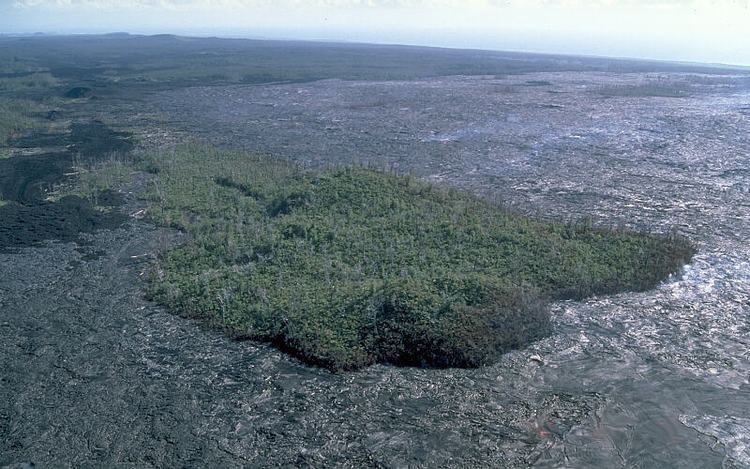 | ||
A kīpuka is an area of land surrounded by one or more younger lava flows. A kīpuka forms when lava flows on either side of a hill, ridge, or older lava dome as it moves downslope or spreads from its source. Older and more weathered than their surroundings, kīpukas often appear to be like islands within a sea of lava flows. They are often covered with soil and late ecological successional vegetation that provide visual contrast as well as habitat for animals in an otherwise inhospitable environment.
Contents
Etymology
Kīpuka, along with ʻaʻā and pāhoehoe, are Hawaiian words related to volcanology that have entered the lexicon of geology. Some have used the word informally as applying to any place where biological life endures the encroachment of civilization, an "island of life."
Significance to research
Kīpuka provides useful study sites for ecological research because they facilitate replication; multiple kīpuka in a system (isolated by the same lava flow) will tend to have uniform substrate age and successional characteristics, but are often isolated-enough from their neighbors to provide meaningful, comparable differences in size, invasion, etc. They are also receptive to experimental treatments. Kīpuka along Saddle Road on Hawaiʻi have served as the natural laboratory for a variety of studies, examining ecological principles like island biogeography, food web control, and biotic resistance to invasiveness.
